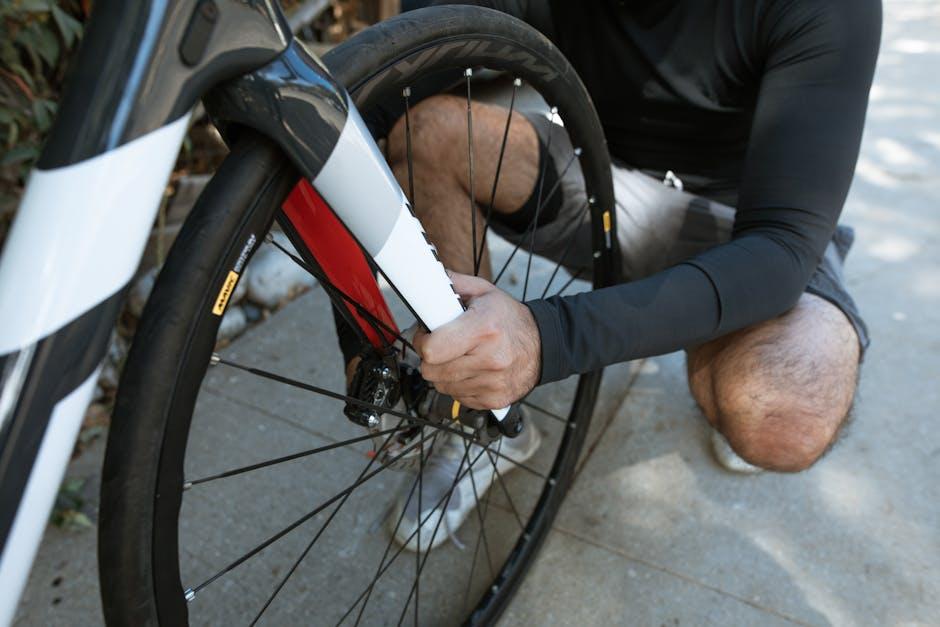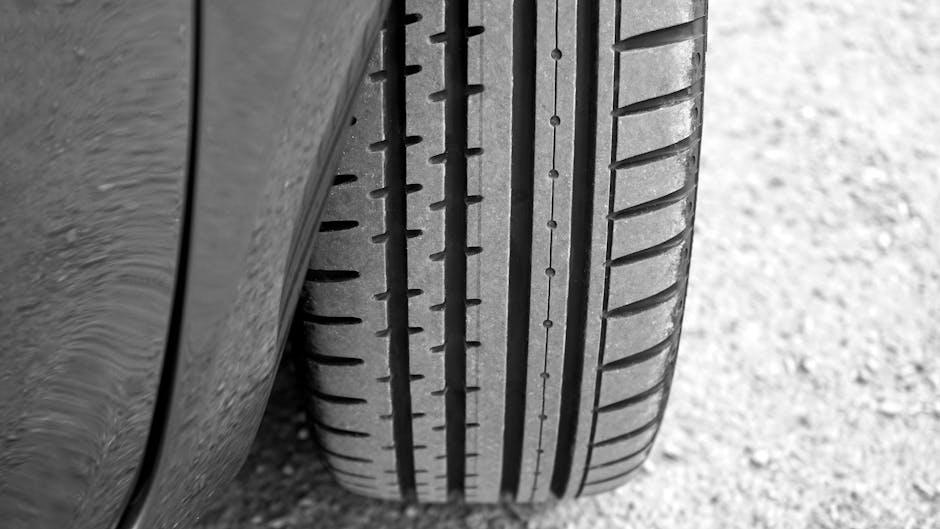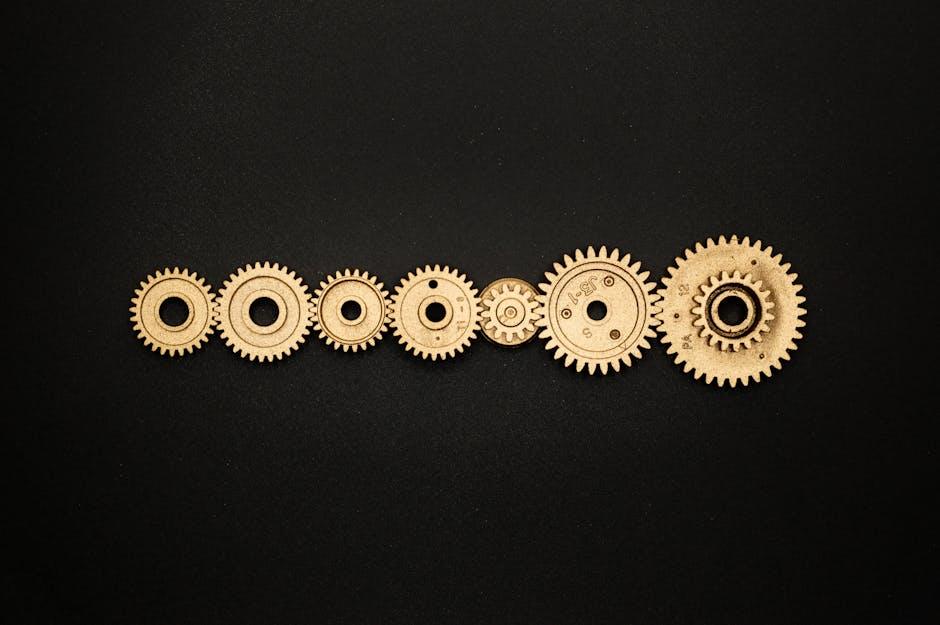Imagine your car as a finely tuned orchestra, where each part must play its role perfectly to create a smooth, harmonious ride. Among these components, wheel alignment acts like the conductor, ensuring every wheel points precisely in the right direction. But what exactly is wheel alignment, and why does it matter so much to your vehicle’s performance and safety? In this article, we’ll explore the subtle art and science behind wheel alignment, uncovering why even the slightest misalignment can make a world of difference on the road. Whether you’re a seasoned driver or new behind the wheel, understanding this essential maintenance task can save you time, money, and frustration down the line.
Table of Contents
- Understanding the Basics of Wheel Alignment
- How Wheel Alignment Impacts Vehicle Performance
- Common Signs Your Vehicle Needs Wheel Alignment
- The Role of Wheel Alignment in Tire Longevity
- Step-by-Step Guide to Checking Your Wheel Alignment
- Professional Alignment Services Versus DIY Approaches
- Q&A
- To Conclude

Understanding the Basics of Wheel Alignment
At its core, wheel alignment is the meticulous adjustment of a vehicle’s suspension system to ensure its wheels point exactly in the right direction. This fine-tuning process directly influences how smoothly your car handles, how evenly your tires wear, and ultimately, how safe your drive is. Without proper alignment, even a brand-new set of tires can degrade rapidly, and steering can become unpredictably difficult—leading to increased fuel consumption and a less comfortable ride. Think of wheel alignment as the unseen choreography beneath your car that makes every journey precise and efficient.
Key factors adjusted during the alignment process include:
- Camber – the inward or outward tilt of the tire viewed from the front;
- Caster – the angle of the steering pivot when viewed from the side;
- Toe – the direction the tires point relative to the car’s centerline.
Here’s a quick breakdown of how these angles affect your vehicle’s performance:
| Alignment Angle | Impact on Driving | Signs of Misalignment |
|---|---|---|
| Camber | Improves cornering grip | Uneven tire wear on edges |
| Caster | Enhances steering stability | Vehicle drifts or pulls |
| Toe | Controls straight-line tracking | Tires squeal or shred quickly |

How Wheel Alignment Impacts Vehicle Performance
Proper wheel alignment is crucial for maintaining the delicate balance and handling characteristics of your vehicle. When wheels are correctly aligned, your car drives straight, corners smoothly, and responds precisely to steering inputs. Misalignment can cause uneven tire wear, making your tires wear out faster on one side. This not only leads to premature replacement costs but also compromises traction, especially in wet or slippery conditions. Additionally, misaligned wheels increase rolling resistance, which can reduce fuel efficiency and place extra strain on suspension components.
Benefits of maintaining correct wheel alignment include:
- Improved tire longevity through even tread wear
- Enhanced vehicle stability and control
- Better fuel economy due to reduced drag
- Decreased stress on steering and suspension systems
| Symptom | Likely Alignment Issue | Potential Impact |
|---|---|---|
| Steering wheel off-center | Toe misalignment | Uneven tire wear and pulling to one side |
| Vehicle pulls to right or left | Camber issue | Reduced handling and tire lifespan |
| Uneven tire tread wear | Incorrect caster setting | Unstable steering feel |

Common Signs Your Vehicle Needs Wheel Alignment
Spotted your vehicle pulling consistently to one side, or notice the steering wheel is off-center while driving straight? These are classic indicators that the wheels may be out of alignment. Uneven or rapid tire wear is another strong hint—if one tire looks more battered than the others, it might be begging for realignment to ensure even contact with the road. Additionally, if your car feels unstable on the highway or you sense vibrations through the steering wheel, these could be your vehicle’s way of signaling misalignment issues.
Keeping an eye on these signs not only enhances your driving comfort but also prolongs the life of your tires and suspension components. Here’s a quick checklist to watch for:
- Steering wheel pulls to one side while driving on a flat road
- Uneven or premature tire wear observed visually
- Steering wheel feels off-center when driving straight
- Vibrations beaming through the steering wheel at certain speeds
- Frequent need to correct steering to keep the vehicle straight
| Symptom | Potential Cause | Recommended Action |
|---|---|---|
| Steering pull | Misaligned front wheels | Book a wheel alignment check |
| Uneven tire wear | Incorrect camber or toe settings | Inspect tires and align accordingly |
| Off-center steering wheel | Suspension damage or misalignment | Full suspension and alignment inspection |
| Steering vibrations | Wheel imbalance or alignment issues | Balance wheels and realign |

The Role of Wheel Alignment in Tire Longevity
Proper wheel alignment is more than just a technical adjustment—it’s a crucial factor in extending the life of your tires. When wheels are aligned correctly, your tires make uniform contact with the road surface, ensuring even wear across the tread. Misaligned wheels can cause certain parts of a tire to wear down prematurely, leading to frequent replacements and unnecessary expenses. This even wear not only saves money but also enhances driving safety by maintaining optimal traction and vehicle control.
Maintaining correct alignment affects tire longevity in several ways:
- Reduced uneven tread wear: Balanced pressure distribution prevents lanes of your tires from wearing faster than others.
- Improved fuel efficiency: Less rolling resistance means your engine works less, indirectly preserving tire condition.
- Smoother ride and handling: Alignment reduces vibrations that can cause tire damage over time.
| Alignment Issue | Typical Tire Wear Pattern | Recommended Action |
|---|---|---|
| Toe Misalignment | Feathered wear on edges | Adjust toe settings |
| Camber Out of Spec | Wear on inner or outer edge | Correct camber angle |
| Improper Caster | Uneven shoulder wear | Realign caster angle |

Step-by-Step Guide to Checking Your Wheel Alignment
Begin by parking your vehicle on a flat and level surface, preferably on concrete or asphalt. Ensure the tires are properly inflated to the manufacturer’s recommended pressure to avoid false readings. Next, visually inspect the tires for uneven wear patterns such as feathering or cupping—these are subtle indicators that your alignment might be off. Using a tape measure, check the distance between the front and rear edges of the front tires. If the measurements differ noticeably, your wheels could be misaligned.
Another simple method involves observing the vehicle’s steering behavior. While driving on a straight, smooth road, gently release the steering wheel for a moment; if the car drifts to one side without turning input, this suggests alignment issues. You can also use a ruler or straight edge against the tire tread to detect any irregular angles. For best results, follow this checklist:
- Check tire pressure and correct as needed
- Inspect tires for uneven wear
- Measure distances between front and rear tire edges
- Test driving behavior for pulling or drifting
- Look for steering wheel misalignment when driving straight

Professional Alignment Services Versus DIY Approaches
Taking a DIY approach to wheel alignment might seem like a cost-effective and straightforward solution, especially for those who enjoy hands-on car maintenance. However, without the proper knowledge, tools, and precision, attempting to realign wheels on your own can lead to uneven tire wear, compromised vehicle handling, and even increased fuel consumption. Professional alignment services go beyond merely adjusting the angle of your wheels—they incorporate advanced diagnostic equipment and calibrated machines that ensure every degree is perfectly measured and corrected according to the manufacturer’s specifications.
Benefits of Professional Services:
- Accurate measurements with laser or computer-based systems
- Comprehensive inspection of suspension and steering components
- Calibration tailored to your specific vehicle model
- Warranty coverage and long-term support
| DIY Approach | Professional Service |
|---|---|
| Basic measurements with manual tools | Laser-guided or computerized alignment |
| Limited to visual checks and guesses | Full diagnostic evaluation of all related systems |
| No warranty or guarantee of work | Service warranties and quality assurance |
| Risk of improper alignment | Precision alignment for optimal performance |
Q&A
Q: What exactly is wheel alignment?
A: Wheel alignment refers to the precise adjustment of a vehicle’s suspension—the system that connects your car to its wheels. The alignment ensures that the wheels are set to the manufacturer’s specifications, allowing them to point in the right direction and work in harmony as you drive.
Q: Why does proper wheel alignment matter?
A: Imagine walking with one shoe pointing forward and the other turned slightly sideways—it wouldn’t feel comfortable or efficient. Similarly, when your wheels are misaligned, your car pulls to one side, tires wear unevenly, and your fuel efficiency drops. Proper alignment smooths out the ride, protects your tires, and helps your vehicle track straight and true.
Q: How do I know if my wheels are out of alignment?
A: There are some telltale signs: your steering wheel might be off-center when driving straight, the vehicle could pull to the left or right, or you might notice uneven tire wear patterns. Sometimes, the ride feels less stable or you experience vibrations.
Q: Does wheel alignment affect safety?
A: Absolutely. Misaligned wheels reduce your ability to steer accurately, which can make handling tricky, especially in emergency situations. Keeping your wheels aligned helps maintain proper contact with the road, enhancing overall control and safety.
Q: How often should I get a wheel alignment?
A: It varies based on driving habits, road conditions, and vehicle type, but a good rule of thumb is to check your alignment annually or every 12,000 miles. Also, if you hit a pothole hard, brush against a curb, or notice any symptoms mentioned earlier, it’s wise to get an alignment check promptly.
Q: Is wheel alignment the same as wheel balancing?
A: Not quite. Wheel alignment adjusts the angles of the wheels relative to the car and each other, whereas wheel balancing distributes the weight around a wheel and tire assembly to prevent vibrations. Both play a role in smooth driving but address different issues.
Q: Can I align my wheels myself?
A: While simple checks can be done at home, precise alignment requires specialized equipment and expertise. Professionals use computerized alignment machines to measure and adjust angles within tight tolerances, so it’s best left to the experts.
Q: What are the consequences of ignoring wheel alignment?
A: Over time, ignoring alignment problems can lead to rapid and uneven tire wear, poor fuel economy, reduced handling, and eventually more costly repairs to suspension components. It’s a bit like letting a small misstep turn into a big stumble.
To Conclude
In the intricate dance between your car’s tires and the road, wheel alignment is the unseen choreographer, guiding each turn with precision. It may be easy to overlook, but proper alignment ensures your vehicle moves smoothly, safely, and efficiently. By paying attention to this subtle yet crucial aspect of car care, you’re not just preserving your tires—you’re enhancing every journey ahead. So next time you hit the road, remember: alignment isn’t just about wheels; it’s about keeping your drive perfectly in tune.
